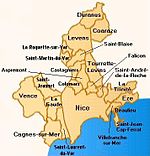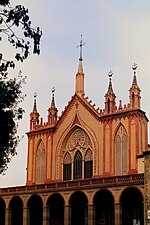Stade du Ray
Football venues in FranceFrench sports venue stubsOGC NiceSports venues completed in 1927Sports venues in Nice

Stade Municipal du Ray was a football stadium in Nice, France. It was the home of OGC Nice since it opened in 1927 and had a capacity of 17,415. It was popular for being located in the center of the city, but suffered from its old structure and small capacity. The red and black colored stadium was mostly used for football. A new stadium was supposed to be built in the Lingostière side, but the project was cancelled in 2006. The stadium was replaced by the Allianz Riviera in September 2013.
Excerpt from the Wikipedia article Stade du Ray (License: CC BY-SA 3.0, Authors, Images).Stade du Ray
Avenue du Ray, Nice Le Ray
Geographical coordinates (GPS) Address Nearby Places Show on map
Geographical coordinates (GPS)
| Latitude | Longitude |
|---|---|
| N 43.723327777778 ° | E 7.2587555555556 ° |
Address
Avenue du Ray
06106 Nice, Le Ray
Provence-Alpes-Côte d'Azur, France
Open on Google Maps








